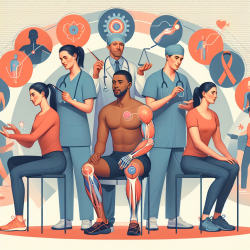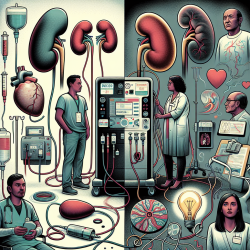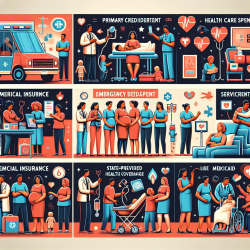Introduction
The rehabilitation of patients with soft tissue and bony sarcomas is a critical component of their treatment journey. The research article titled "Rehabilitation to Improve the Function and Quality of Life of Soft Tissue and Bony Sarcoma Patients" by Andrews et al. provides valuable insights into the role of multidisciplinary rehabilitation in enhancing patient outcomes. This blog aims to guide practitioners in implementing these findings to improve their skills and encourage further research in this domain.
Understanding the Impact of Sarcoma Treatment
Sarcomas, though rare, have significant implications on patient quality of life (QOL) and function. Treatments typically involve surgery, chemotherapy, and radiation, each contributing to varied side effects. The research emphasizes the importance of a multidisciplinary approach to rehabilitation, which can address issues such as pain, neuropathy, and activity restrictions.
The Role of Multidisciplinary Rehabilitation
Rehabilitation services have gained recognition for their role in improving outcomes for cancer patients, particularly those with sarcomas. The involvement of a multidisciplinary team, including physiatrists, physical therapists, occupational therapists, and speech-language pathologists, is crucial. These professionals work collaboratively to address the complex needs of sarcoma patients, focusing on both physical and psychosocial aspects.
Key Strategies for Practitioners
- Prehabilitation: Implementing rehabilitation before cancer treatment can help patients tolerate side effects better and improve their overall treatment experience.
- Inpatient and Outpatient Rehabilitation: Tailoring rehabilitation plans to individual patient needs post-surgery, whether they undergo limb salvage or amputation, is essential for optimizing functional recovery.
- Pain Management: Addressing neuropathic and musculoskeletal pain through pharmacologic and non-pharmacologic interventions is vital for maintaining patient function and QOL.
- Measurement Tools: Utilizing tools like the Musculoskeletal Tumor Society (MSTS) rating scale and the Toronto Extremity Salvage Score (TESS) to assess patient progress and guide rehabilitation strategies.
Encouraging Further Research
The research by Andrews et al. highlights the need for continued exploration into rehabilitation strategies for sarcoma patients. Practitioners are encouraged to engage in further research to refine rehabilitation protocols and contribute to the growing body of knowledge in this field.
Conclusion
Implementing a multidisciplinary rehabilitation approach for sarcoma patients can significantly enhance their quality of life and functional outcomes. By integrating the findings from the research by Andrews et al., practitioners can improve their skills and contribute to better patient care. To read the original research paper, please follow this link: Rehabilitation to Improve the Function and Quality of Life of Soft Tissue and Bony Sarcoma Patients.










